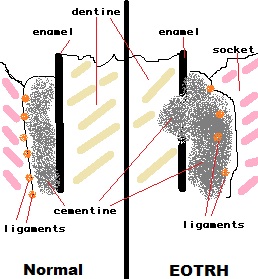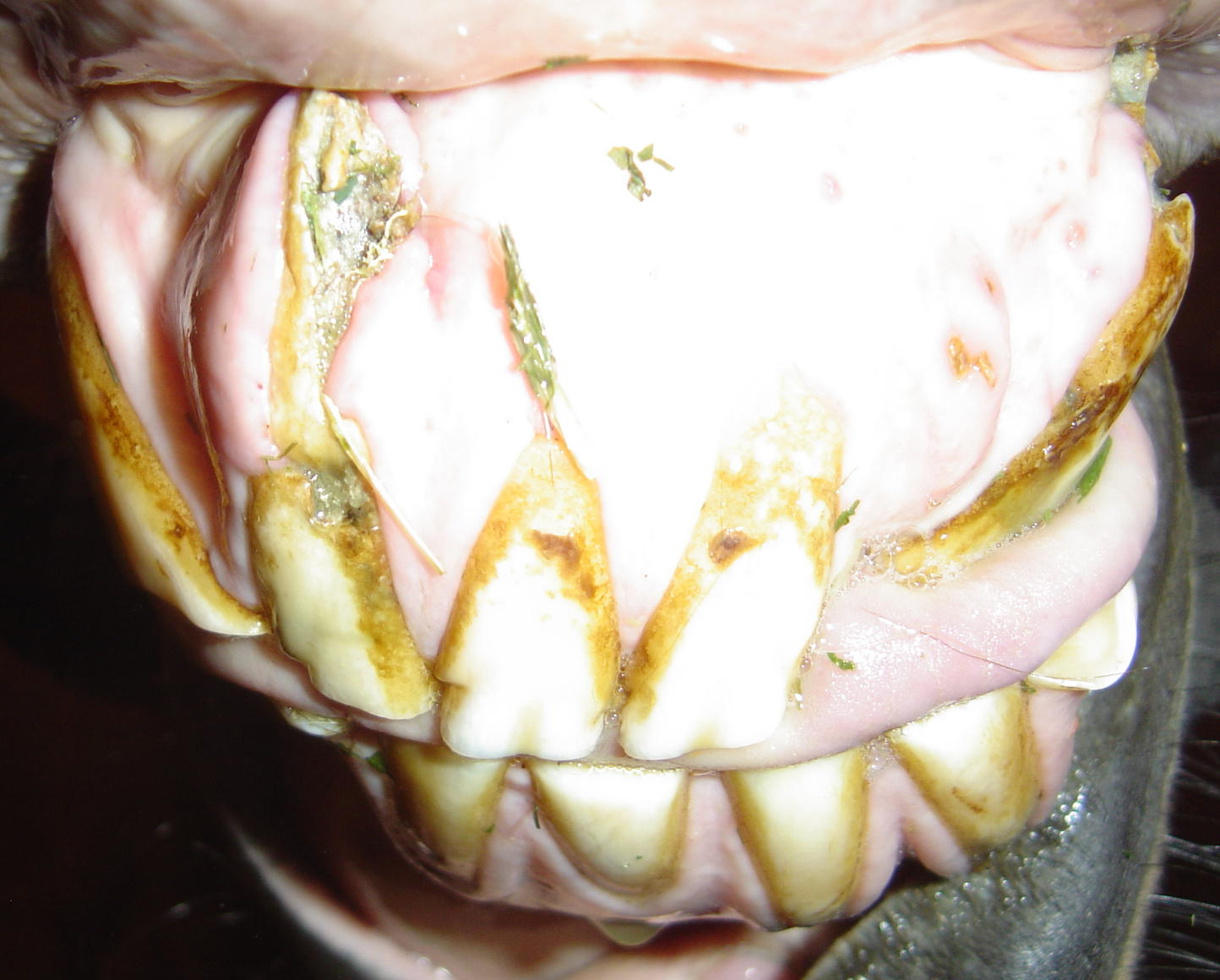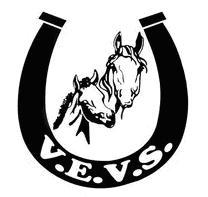 EOTRH affects a horse's incisors, canines, and also the outside surface of the lower molars (last 3 cheek teeth). It is more likely to be found in horses over 15 years of age. Xrays usually find dental reabsorption occurring concurrently with a bulbous enlargement of aspects of the teeth by radio-opaque masses. A histopathology of the biopsy of these lesions will find an infiltration of the inflammatory cells, fibrosis (scarring) of the gums and ligaments, as well as lysis (cell death due to broken cell membrane) of any adjacent bone, and cemental overgrowth (hyperplasia). The cause of EOTRH is still unknown, and similar dental diseases have been reported in humans and cats.
EOTRH affects a horse's incisors, canines, and also the outside surface of the lower molars (last 3 cheek teeth). It is more likely to be found in horses over 15 years of age. Xrays usually find dental reabsorption occurring concurrently with a bulbous enlargement of aspects of the teeth by radio-opaque masses. A histopathology of the biopsy of these lesions will find an infiltration of the inflammatory cells, fibrosis (scarring) of the gums and ligaments, as well as lysis (cell death due to broken cell membrane) of any adjacent bone, and cemental overgrowth (hyperplasia). The cause of EOTRH is still unknown, and similar dental diseases have been reported in humans and cats.
Anatomy
A horse's tooth consists of an enamel outer skeleton (very hard but nothing sticks to it so wouldn't stay in the socket); with filling-in by dentine (a little softer so forms the ridges on the chewing/occlusal surface of the tooth); and cementum on the outside of the enamel which gives the grip for the periodontal ligaments in the socket to hold onto. Hypercementosis refers to this cementum layer becoming excessive.
Symptoms
EOTRH may result in:
- 'cavities' in the side of the tooth
- excess tartar formation
- dead or loose teeth
- painful swellings in the gum or jaw
- food packing (especially molars)
- gingival ulceration
- purulent breath
- oral pain & reduced jaw mobility
The above may present as weightloss, feed spilling, quidding, slow to eat, washing feed in trough, undigested feed in faeces. Ridden hortses may chew their bit, resist their bit, and toss their head.
 Diagnoses
Diagnoses
Your expert equine dental vet may suspect EOTRH by examining the horse's teeth under sedation with a gag, as part of their annual dental exam. To confirm EOTRH they may reccommend xrays and biopsy, especially in cases that are still in their milder and less obvious stages.
Treatment
At this stage there is no permanent cure of EOTRH because we don't yet know its cause. Upon diagnosis, the aim of treatment is to halt the reabsorption processes and hopefully prevent further damage. Treatment may include rouytine courses of antibiotics, steroid injections into the teeth, as well as extraction of any lossened or badly affected teeth. Remaining teeth may be splintered with acrylic materials to reduce their mobility and associated pain. Sadly the disease will tend to progress regardless of treatment.
Long Term Treatment
Daily flushing with a chlorhexadine solution may delay the disease
Prevention
As there is still no obvious cause, preventing EORTH is difficult. Keeping up your horse's annual dental exam with an experienced vet will help to identify any problems as they arise.
Back to Dentistry










